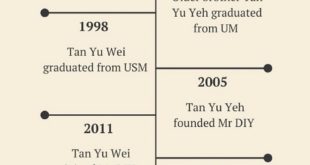One of the most important and yet the least covered topics of the latest 2021 Budget announcement in Singapore was the Significant Infrastructure Government Loan Act (SINGA).
What it means is that for the first time in about 40 years, the Singapore government is going to borrow money to finance some of its projects.
As part of SINGA, Singapore is about to take on a considerable amount of debt that is up to S$ 90 billion, or around 20 per cent of its GDP.
“Debt” is a big, dirty, scary word which in recent years has been associated with financial problems around the world, but this is not the case for Singapore. Let me explain why.
By law, the Singapore government is barred from borrowing money to finance recurring budgetary expenses (like welfare spending).
It is a sound policy preventing populist bloat witnessed in the West, where competing political camps have for decades kept buying votes by promising ever-greater handouts, which often had to be financed by endless borrowing.
This led to de facto bankruptcy of several countries, which were only salvaged by a massive bailout program, following the crisis in 2008.
However, Singapore has done quite the opposite.
The government is forced to run balanced budgets (save for deep crises like the current pandemic) and usually accumulates significant surpluses over each five-year term.
These savings are then moved into past reserves, managed for profit.
Prior to the pandemic, the annualised 20-year nominal return rate for GIC was 5.5 per cent. In other words, the company manages to very nearly triple the assets every 20 years.
While the complete size of Singapore’s reserves is not known (as the figures for GIC holdings are not publicly available), the estimated range is around S$ 700 billion to S$ 1 trillion — returns on which provide over 20 per cent of the government’s revenues annually (an estimated S$ 20 billion in 2021).
It’s Cheaper For S’pore To Borrow Money
In recent decades, the government has financed its major investments within budgetary means.
However, as the reserves have grown, the interest rates have gone down around the world, reducing borrowing costs. Yields on 10-year Singapore Government Bonds used to reach around four per cent per annum in the early 2000s, compared to just 1.25 per cent today.
As a result, it would be far more costly for the government in Singapore to unwind its reserves or use current revenues to finance major infrastructure projects than it is by borrowing.
The cost of using the money, which would otherwise end up in reserves is four to five per cent (the return the GIC can be expected to earn on average, over the long term), compared to one to two per cent that the government is paying in the bond markets to “borrow money”.
While the cost of borrowing is a loss for nearly all countries, for Singapore, it is a lower opportunity cost than using current reserve money. It’s cheaper.
Every Crisis Is An Opportunity
Thanks to decades of savings and profitable investments, taking on debt is not a necessity. It’s an opportunity.
With SINGA, the government will be able to spend an additional S$ 90 billion over the course of 15 years, investing in already planned and necessary infrastructural projects, without reducing its recurring budgetary spending and allowing for a quicker return of the money drawn down for Covid-19 relief from the reserves.
In addition, the added expenditures should provide an additional boost of one to two per cent of GDP (which could be even greater with multiplier effects, as the money circulates in the economy) per year. All of that is accomplished very cheaply.
In other words, with a single piece of legislation, the Singapore government is able to achieve multiple things:
- Shield the reserves and return the Covid-19 relief money more quickly.
- Secure financing for major infrastructure projects in the next 15 years without having to reduce its annual spending or divert money from other causes.
- Provide an additional stimulus to the economy in a world beset by the consequences of the pandemic.
- All of that at a cost lower than using the money from its annual budgets, thanks to decades of profitable investment of its vast reserves.
While the rest of the planet is buckling under the explosion of debt due to Covid-19, which pushed some to printing money to finance scarcely sustainable levels of spending just to avoid economic collapse, Singapore is in an enviable position of having the freedom to borrow not to save itself from a disaster, but rather to ensure a brighter future thanks to low interest rates.
Every crisis is an opportunity and with SINGA, Singapore is positioning itself to make the most out of this one.
Of course, the onus is on the government to manage the debt properly and to ensure that the debt level is kept within acceptable range, and that this debt do not eventually turn into unsustainable bad debt in the future.



